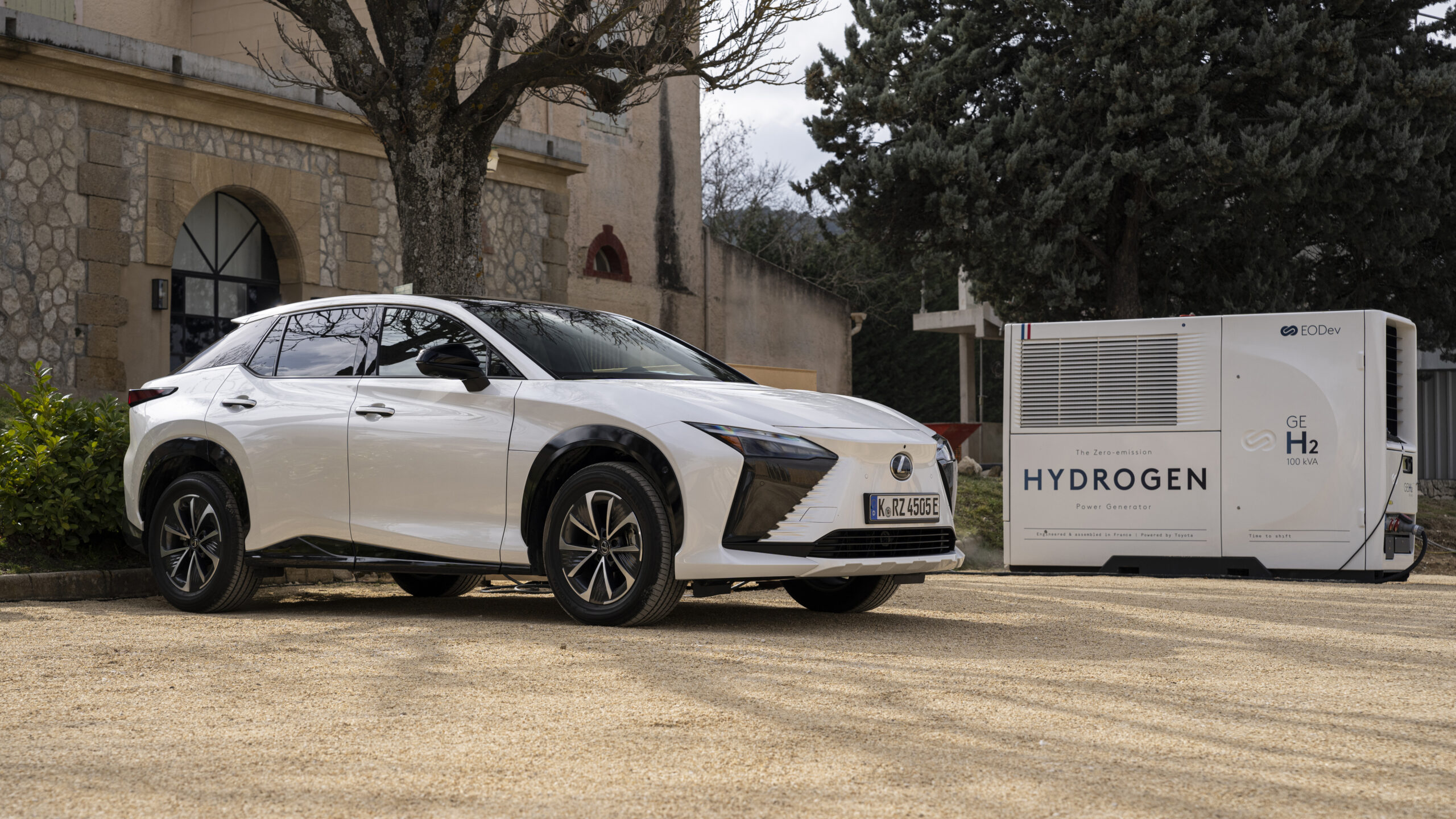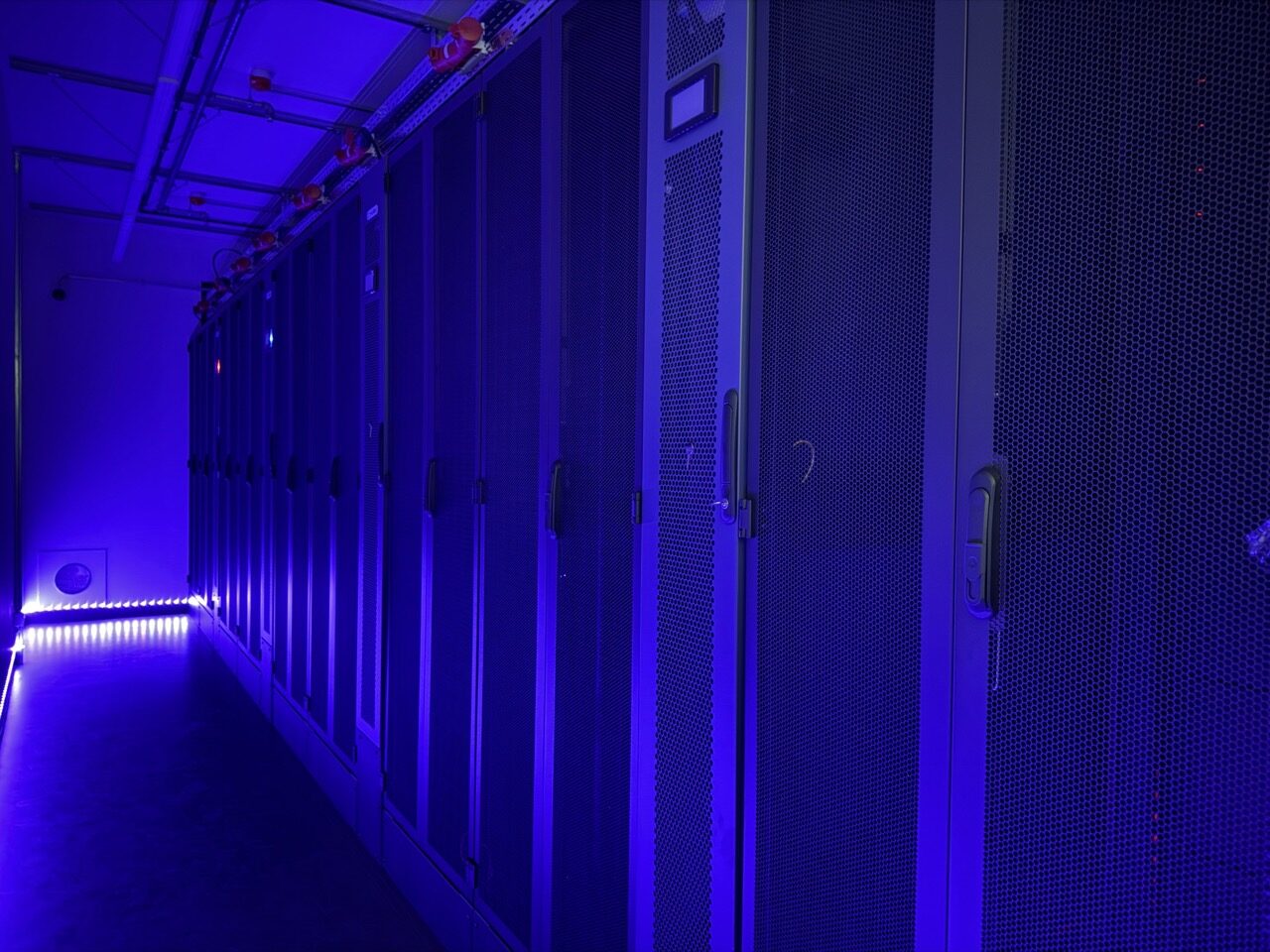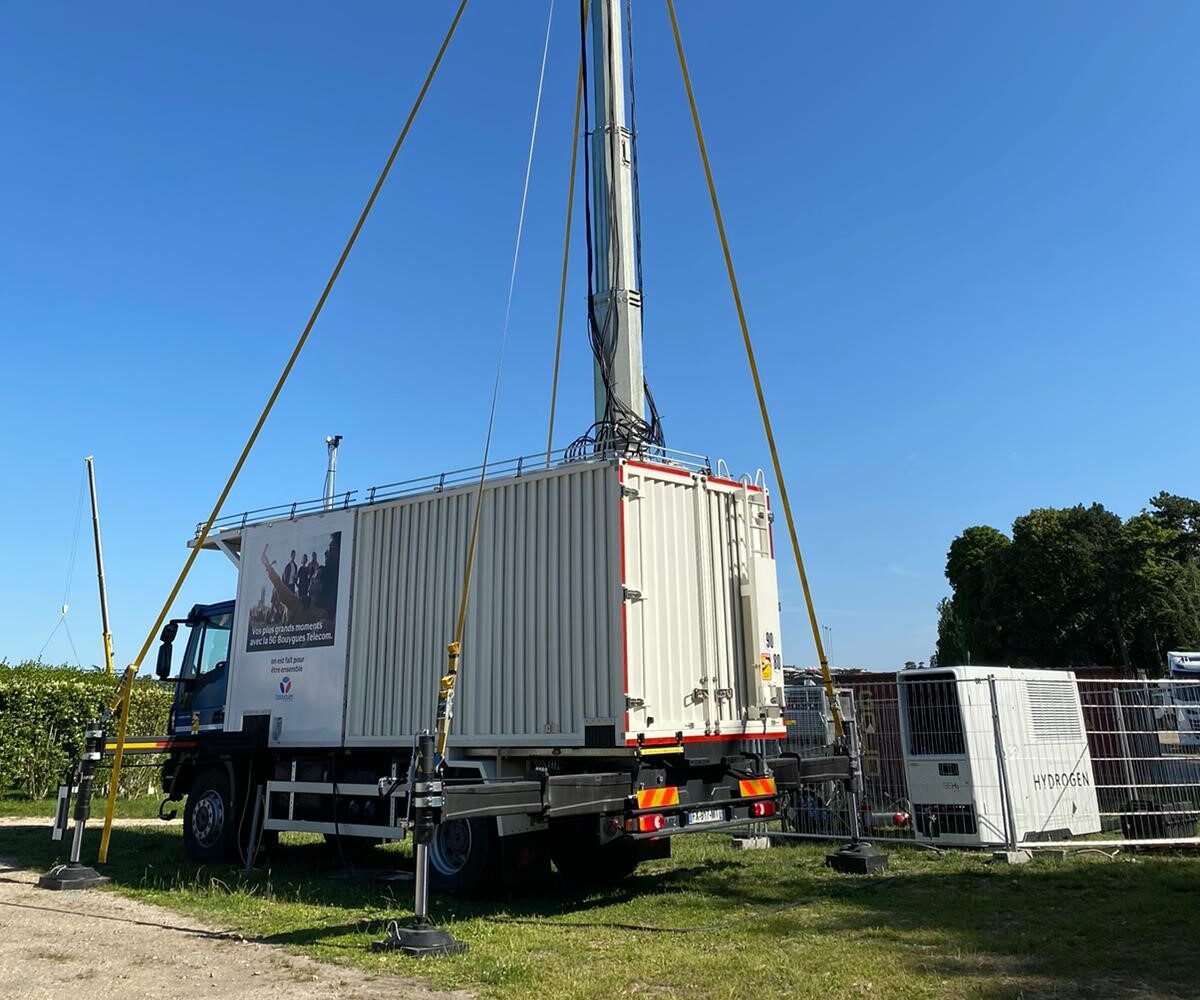Stationary & mobile energy production
Easily deployed to support or complement the grid, our energy storage and production solutions are the best allies for the transition. Used alone or in combination, GEH₂ and BESSTIE can quickly compensate for a lack of recharging infrastructure or increase capacity during periods of high demand, particularly during the summer holidays.
Simultaneous recharging of up to 8 vehicles
Using a standard 7kW charger, up to 8 electric vehicles can be recharged simultaneously by a GEH₂ or a BESS system alone. By combining the two solutions, energy capacity is increased tenfold, while facilitating logistical management and recharging of the GEH₂ with hydrogen, for example, while the BESS in turn recharges the vehicles.
Recharging a fleet of vehicles
To mark the launch of its brand new range of electric vehicles, Lexus called on EODev to recharge them in Aix-en-Provence.
Powering a recharging point
Due to a lack of available charging points at the Lexus event, a GEH₂ was deployed for 2 days. The aim was to recharge the vehicles presented to the press on site. The electro-hydrogen unit supplied electricity to a good four chargers for recharging the fleet.
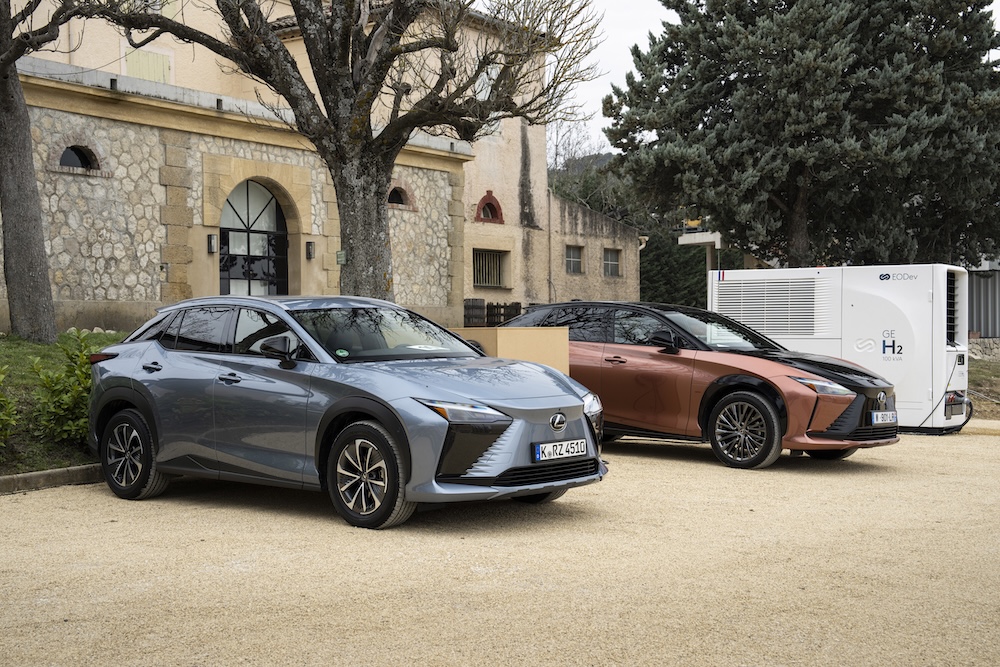
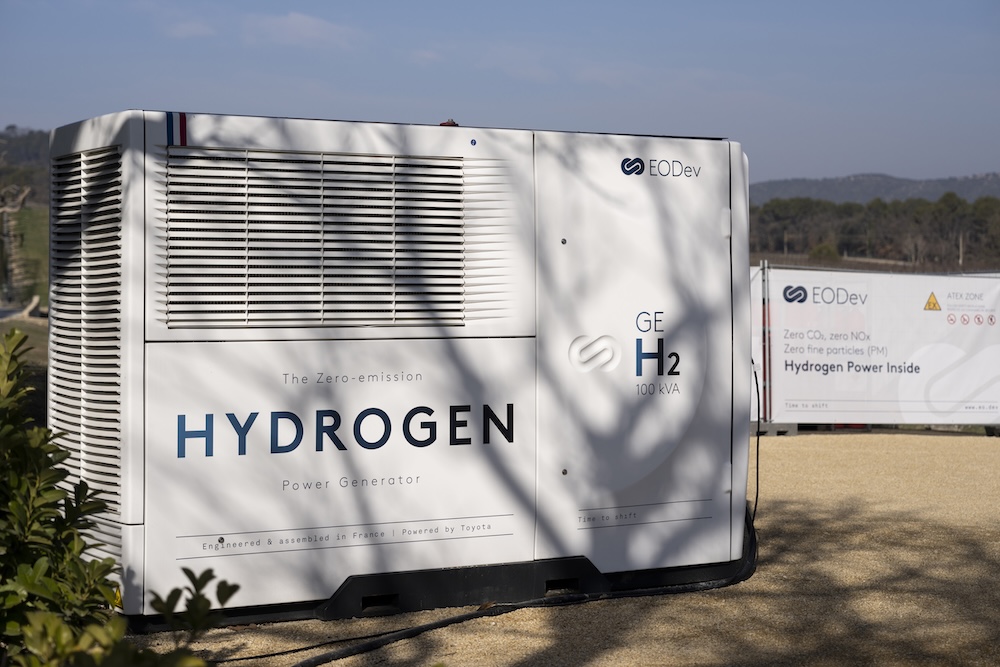
A secure ATEX zone
To meet energy needs, two hydrogen frames were deployed, each comprising 12 cylinders. Set back almost 5 metres from the genset, the fully protected zone guarantees user safety. Access to the area is reserved for qualified and trained personnel, who can refill the cylinders with hydrogen as required.
